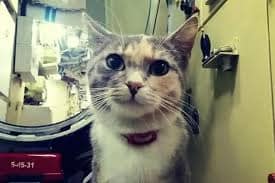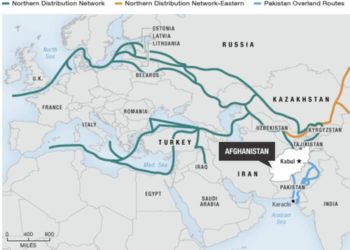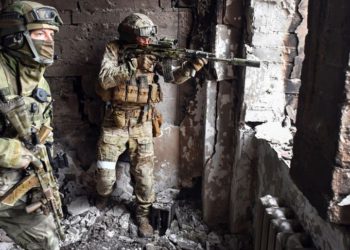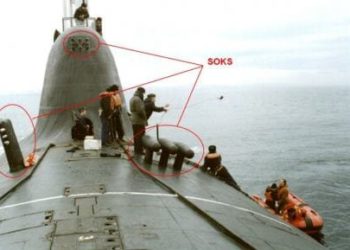Why the Ukrainian conflict is first and foremost a civil war. The Ukrainian conflict is often simplified by Western Media as a simple war of invasion, as in Russia invading Ukraine. As usual, things are much more complicated on the ground. We will in due time publish a full article on the Ukrainian conflict. We are painfully aware that the topic is controversial and polarising: Whatever we may write on the subject will displease 50% of the internet! This probably explains why we have been working on this article for a couple of years, now, gathering as much data as possible from all sides and from a maximum of sources, cross-referencing the results as we go. The said article won’t be ready for a while. However, we wanted to supply you with a limited write-up in the meantime. The finished article will go back in time much further than the 21st century and will be much more granular as to the root causes of the conflict. Take this post as a summary, although one that is already heavy with data. This summary also focusses on Crimea, rather than on the whole picture.
In late November 2013, the world, glued to its TV screens, witnessed Euromaidan in Kiev. The pro-Russian Ukrainian president Viktor Yanukovych was the victim of a pro-Western revolution/anti-Russian coup (depending on where you stand on the issue).
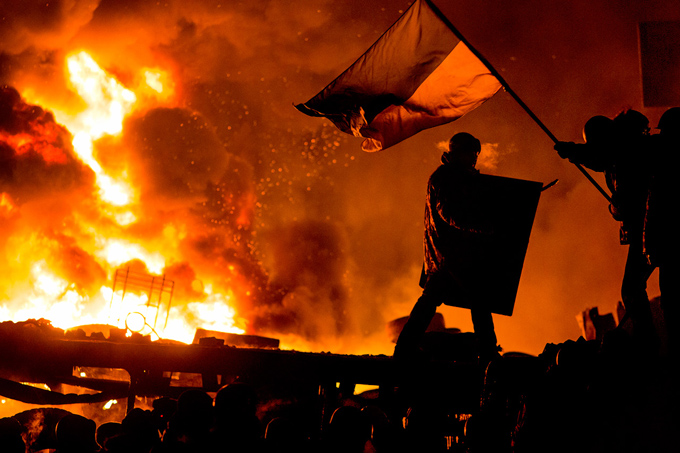
The coup/revolution and subsequent creation of a pro-Western interim government in Kiev, advocating deeper ties with the European Union, angered the population of Crimea and Eastern Ukraine: At the time, the population of the Donbass region was comprised of around 39% ethnic Russians. 65% of the Crimean population was ethnic Russian, too. We are talking here about people bearing Ukrainian nationality but having Russian ancestry.
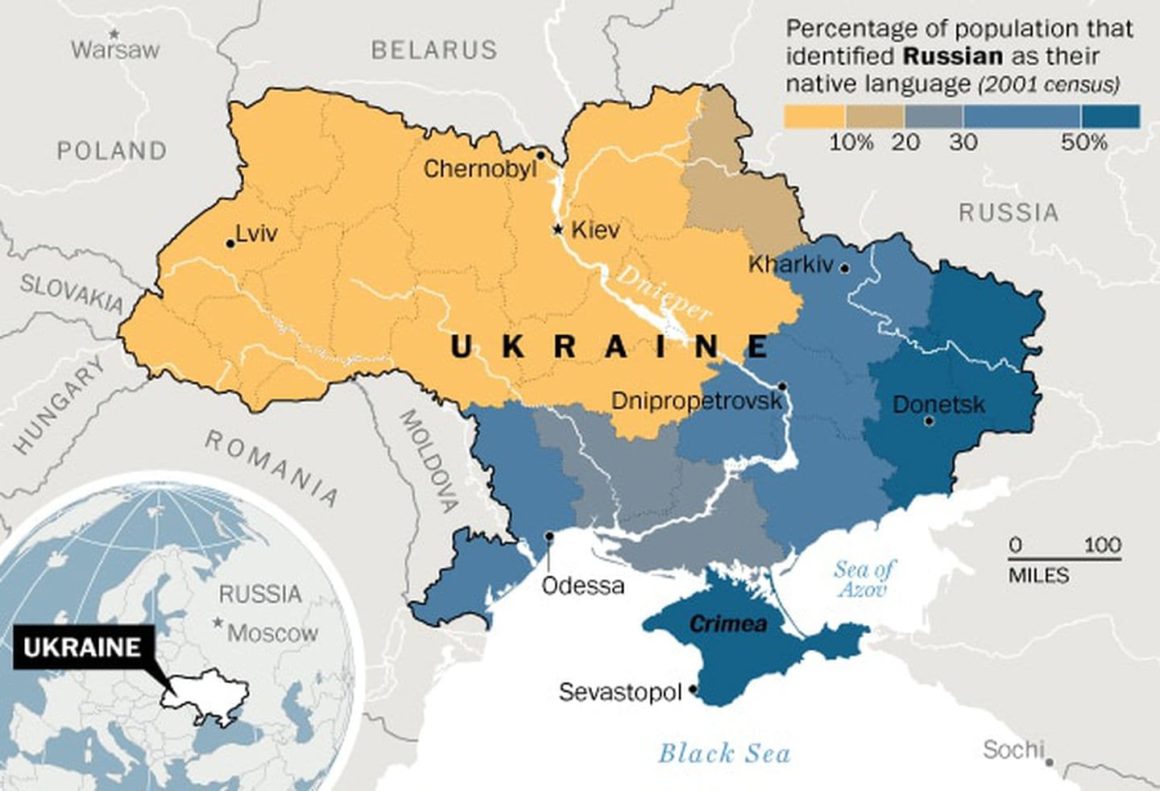
In total, in 2014, 8.3 million Ukrainians (out of a total population of 40 million people) listed Russian as their first/native language! The distinction is worth being made: Ethnic Ukrainian living in Crimea and in Eastern Ukraine also listed Russian as their first language. Most of the Ukrainian Russophone community lives in Eastern Ukraine (Mostly around the Luhansk and Donetsk Oblasts), Southern Ukraine (Odessa), and the Crimean peninsula. That portion of the population generally supported the ousted president (Viktor Yanukovych). They also had deep ties with Russia: They shared in common with Russia not only its language but also its religion, culture, and traditions. It was common for those people to have family members or friends living and working in Russia, too. It is important to understand that in that regard, Ukrainians in Crimea and in the Donbass have more in common with somebody from Moscow than they have with somebody from Kiev.

In response to the events unfolding in Kiev, some members of the Sevastopol city council, in Crimea, called for the formation of people’s militias in late January. It is interesting to note that despite the call for the formation of popular militias in Sevastopol, the Crimean administration based in Simferopol stated that it would support the Ukrainian territorial integrity. Furthermore, it stated that it recognised the interim government in Kiev and would keep on implementing Ukrainian laws. That position, however, seemed to be out of step with the pro-Russian sentiments of the Crimean population and the realities on the ground, at least, initially, in Sevastopol, home to many Russian servicemen and home to the Russian Black Sea Fleet.
A poll conducted by the Kiev International Institute of Sociology (KIIS) running from the 8th to the 18th of February 2014 assessed support for union with Russia throughout Ukraine. 41.0% of participants in Crimea answered yes. The results were similarly interesting in Donetsk Oblast (33.2%) and in Luhansk Oblast (24.1%). Those figures show the share of “hardcore” pro-Russian supporters within those Ukrainian regions. To this, one must add the share of more moderate pro-Russian supporters in the Donbass and in Crimea, to have the correct picture/figure.
It is interesting and important to note that those pro-Russian supporters were Ukrainians, first and foremost. The population in those regions was not initially advocating secession from the rest of Ukraine. Instead, they were calling for good ties with Russia and were against the pro-European and pro-NATO policies advocated by the interim government in Kiev. The same policies that were supported by a vast majority of the Western Ukrainian population. This shows a real deep fracture within the Ukrainian population between West and East.
There was also a deep distrust between the population in Crimea and in the Donbass and the interim government in Kiev: Another opinion poll conducted from the 14th to the 26th of March 2014 by the International Republican Institute showed that 26% to 27% of those polled in Southern and Eastern Ukraine viewed the EuroMaidan protests as a coup d’état. Furthermore, later, when Russia entered the fray, the same poll showed that 43% of Ethnic Russians in Ukraine supported the decision of the Russian Federation to send Russian soldiers “to protect the Russian speaking minorities in Eastern Ukraine”…
In any case, it took Vladimir Putin and the Russian government some time to catch up on the situation in Sevastopol… A whole month, in fact: On February the 22nd, the Russian president held an all-night meeting with the Russian security services chiefs. The next day, pro-Russian rallies and protests started being held in Sevastopol, Crimea… The very next day (24th of February) Cossacks appeared. This was the first indication of Russian involvement in those protests.
On the 24th of February, under pressure from the popular protests and some members or his own administration, Volodymyr Yatsuba, head of the Sevastopol city council resigned. The new interim council, rudderless, buckled under pressure and elected Alexei Chaly, a Russian citizen, as Mayor of the city… A decision which was illegal under Ukrainian laws as the Mayor of Sevastopol is by law appointed by the Ukrainian president…
On the 25th of February, amongst more pro-Russian marches and protests, Sevastopol police chief Alexander Goncharov stated that he would not carry out “criminal” orders issued by Kiev: And just like that, with this statement, the police had just defected to the pro-Russian side.
The following day, on the 26th of February, pro-Ukrainian protests were still held in Simferopol, home of the Supreme Council of Crimea. The pro-Kiev protests were held by ethnic Ukrainians and Ethnic Tatar citizens. The very next day, “Little Green Men” seized the building. The Crimean parliament was now in Russian hands. Under occupation, the Crimean parliament convened and replaced the Crimean prime minister by Sergey Aksyonov, who belonged to a pro-Russian political party. Sergey Aksyonov announced that his administration did not recognise the new Ukrainian interim government and instead still recognised deposed president Viktor Yanukovych as the legitimate leader of Ukraine. Through him, Sergey Aksyonov requested military assistance from Russia, on behalf of Crimea. By then, Yanukovych had already reached exile in Russia. The parliament also voted to hold a referendum on greater autonomy for Crimea. It was to be held on the 25th of May. Some sources report that some (pro-Ukrainian) members of the parliament voted the law while being held at gunpoint…
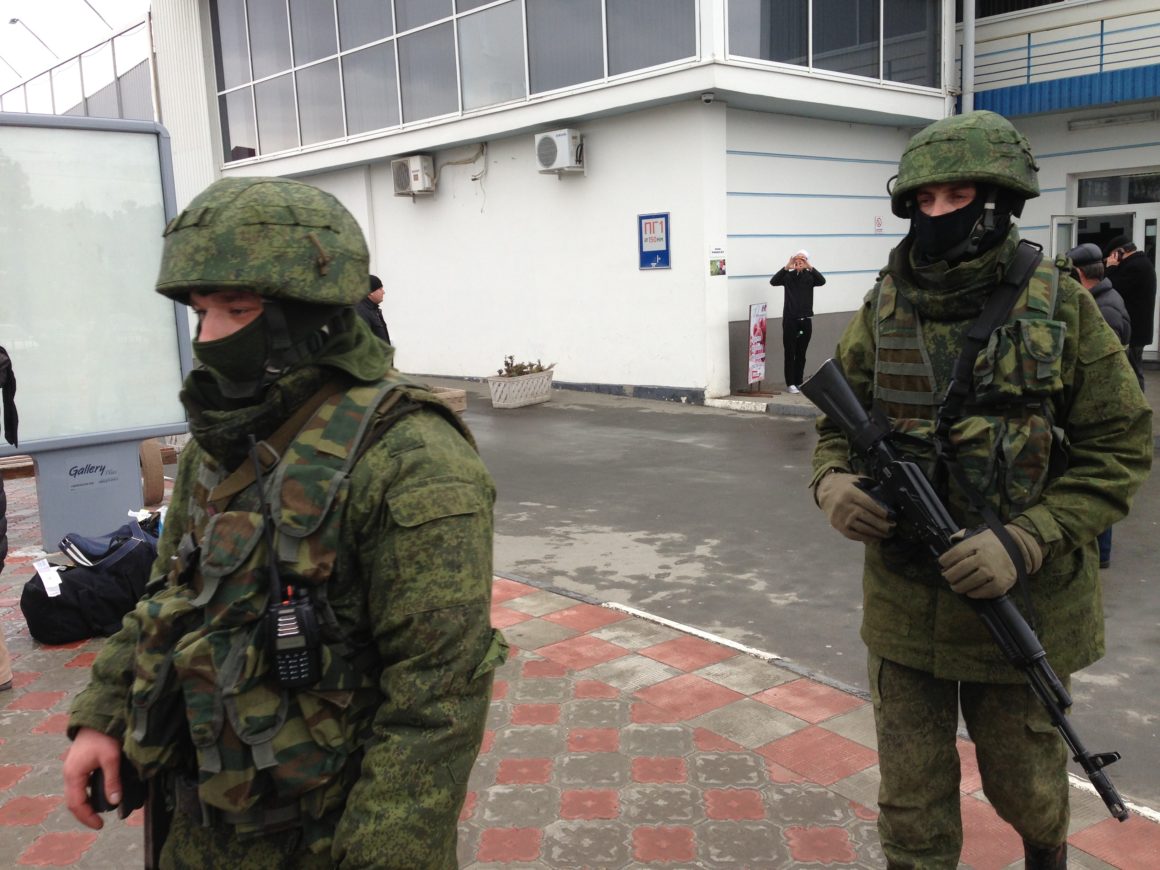
At the same time, little green men, assisted by Crimean riot police officers and Russian troops from the 31st Separate Airborne Assault Brigade dressed in police uniforms erected checkpoints between Ukraine and Crimea: The Crimean peninsula was now cut off from mainland Ukraine.
On the 1st of March 2014, Crimea’s authorities officially requested Russian military protection. The very next day, Russian military units burst out of their bases in Sevastopol and deployed across the peninsula. They were supported by Russian military units from mainland Russia, including the 18th Motor Rifle Brigade, the 31st Air Assault Brigade and the 22nd Spetsnaz Brigade.
Ukrainian army bases, Ukrainian navy vessels and Ukrainian air forces bases were surrounded and besieged. Ukrainian soldiers were given the choice between joining the Russian side or withdrawing back to Ukraine. Russian troops encountered some light resistance at some of the bases, but all eventually surrendered. There were no battles, no firefights. On some rare occasions, Russian forces used stun grenades.
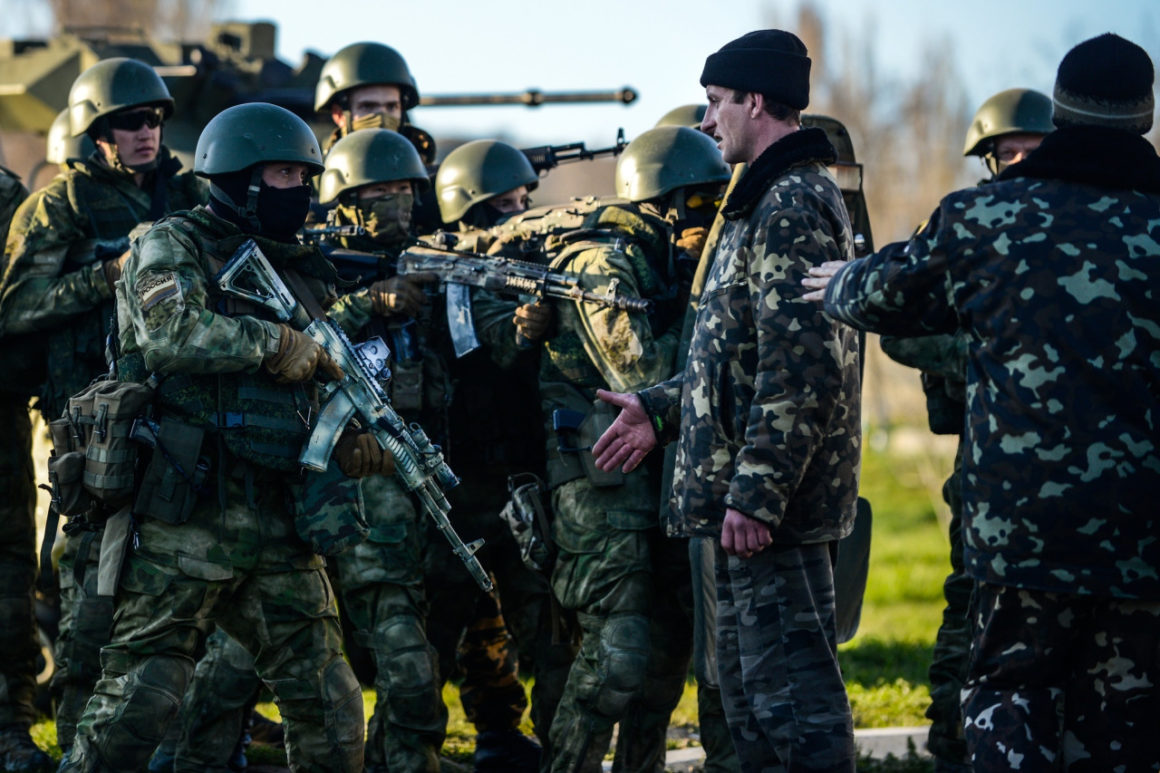
Why did Ukrainian units in Crimea fold so easily? An important factor was the Ukrainian armed forces’ decrepit state: Badly equipped, badly trained troops and unusable hardware. On the 21st of February 2014, only 5,000 Ukrainian troops were battle ready across the whole of Ukraine. They were faced by 20,000 Russian soldiers inside of Crimea alone, with an additional 38,000 standing along the Russo-Ukrainian border.
Many of the Ukrainian air force planes based in Crimea at the time were in such a state of disrepair that they could not be flown back to mainland Ukraine by their pilots. They were therefore left behind! In 2014, the Ukrainian Air Force listed 400 aircraft of various types in its inventory. By 2016, after having discounted the planes left behind in Crimea and the Donbass, subtracted combat losses and written off planes that could not be repaired, the Ukrainian Air Force was left with 222 planes. Those figures represent losses of 178 planes in 2 years.
The most important factor of this rout was that many Ukrainian servicemen serving in Crimea were Russian speakers and/or ethnic Russians… Men torn between the flag they served and their own linguistic, religious and cultural roots. As a result, many Ukrainian soldiers in Crimea joined the Russian side. In fact, Ukrainian Armed Forces’ Deputy Chief of the Main Command Center Oleksandr Rozmaznin admitted at the time that around 50% of Ukrainian officers and soldiers based in the Crimean peninsula defected to the Russian side!
The most prominent example of them all is Sergei Yeliseyev. Sergei Yeliseyev was born in the Soviet Union. When said Union disintegrated, he, an ethnic Russian, found himself in a newly independent country: Ukraine. He was not alone: The day after the dissolution of the Soviet Union, 25 million Russians found themselves foreigners in new countries (former Soviet Republics)!
In any case, Sergei Yeliseyev remained in Ukraine and served in its Navy, rising through the ranks. In February 2014, at the time of the EuroMaidan revolution in Kiev and the unrest in Crimea, he was First Deputy Commander of the Ukrainian Fleet and was therefore posted in Sevastopol. Torn like many of his men, between the Ukrainian flag he served and the call from his roots, he quit and joined the Russian side. For his loyalty, he was rewarded by Moscow and became Deputy Chief of the Baltic Fleet.
The same scenario was repeated onboard many vessels of the Ukrainian Navy: Crews swapped sides or only offered token resistance. In all, 51 Ukrainian Navy ships were captured by the Russians according to information compiled by Dmitry Tymchuk, director of the Center of Military and Political Research in Kiev. As of March the 26th, just 10 Ukrainian vessels remained in its navy’s possession. Later, Russia returned 21 vessels to Ukraine, citing their bad state of disrepair.
The fact is, as stated above, the Ukrainian war is a civil war, pitting Ukrainians against Ukrainians, splitting families and loyalties. There is no denying that there is a strong Russian involvement in this war.. To the contrary, Russia is deeply involved, politically, economically and militarily! But so are other countries, as is customary during any civil war…
However, to deny that a large portion of the Ukrainian population in Crimea and in the Donbass felt alienated by the events in Kiev in November 2014, felt alienated by the new pro-EU interim government and felt deeply attached to their Russian roots, religion, culture and language, is simply denying realities on the ground. The narrative of good Ukrainians and bad Russians is extremely simplistic: Before the war, there were between 1 and 2 million ethnic Ukrainians living and working in Russia. In fact, prior to 2014, over 300,000 Ukrainians would emigrate to Russia each year… In 2014, in the Donbass, as protests turned to unrest and as unrest turned to armed conflict, 2 million Ukrainians escaped the frontline and the shelling and crossed the border, becoming refugees in Russia and Crimea, escaping the war in the process. If those people had perceived Russia as the aggressor, as it is so often depicted in the media, they would have been seeking shelter in Western Ukraine… And yet, instead, they did seek shelter in Russia…
This gives you a measure of how intertwined Ukraine and Russia are and how complex the situation on the ground was in 2014 and still is to this day…
The Crimean referendum on its status was moved forward and held on the March the 16th 2014. With a turnout of 83%, 96% of the votes went for Crimea to join the Russian Federation. The Crimean administration was by then not recognised by Kiev. Therefore, neither Ukraine nor the international community accepted the result of this referendum. This changed very little things for Moscow, which welcomed Crimea back into its fold for the first time since 1954!
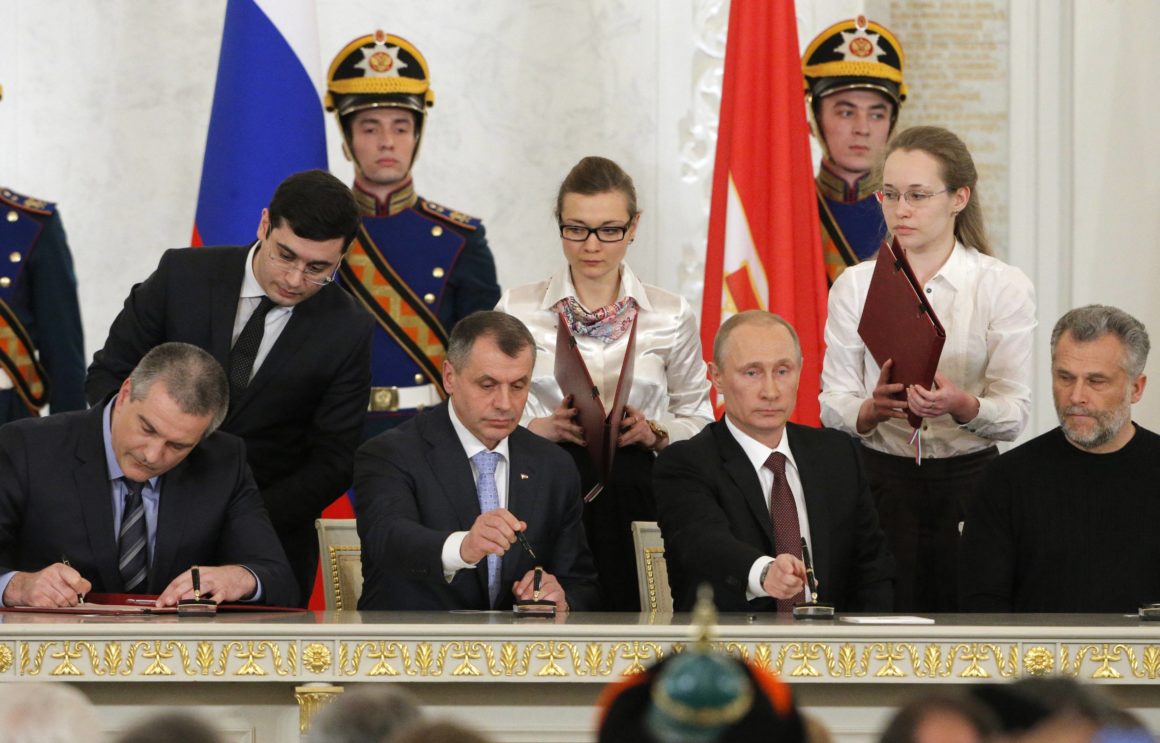
In any case, by the 24th of March 2014, powerless, Kiev was negotiating the withdrawal of its remaining troops from Crimea with Moscow. Ukraine had lost its peninsula…





